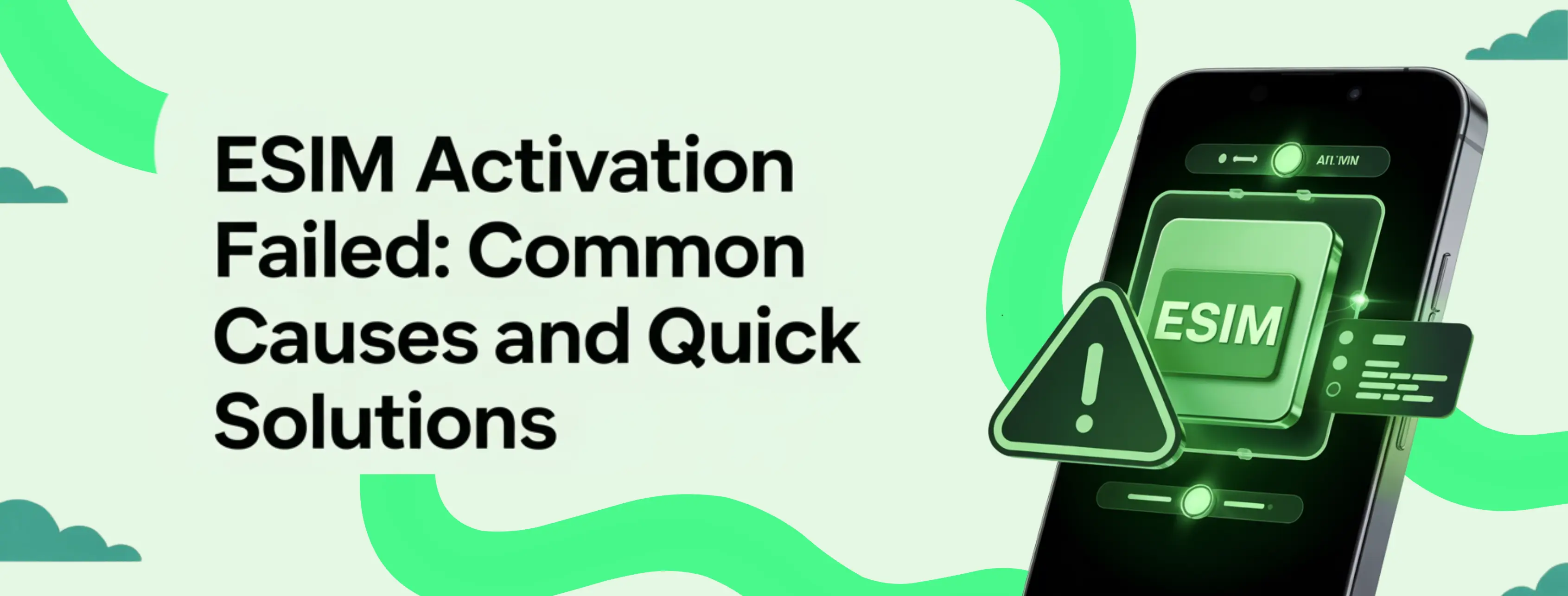
How Much Does eSIM Cost? A Comprehensive Guide
The evolution of the SIM card led to the rise of eSIM. Embedded SIM is a great option for travelers to have flexible and convenient connections globally. But the cost of eSIM matters more. The cost of eSIM varies depending on different factors such as the carrier, data plans, and whether the domestic or international plan you are purchasing. It is an all-in-one package that offers many services compared to traditional SIM cards. If you plan a trip abroad, you should explore eSIM, its price, and the factors affecting its cost.
What is eSIM technology?
It is important to know about eSIM technology before considering how much it costs. eSIM is the electronic SIM embedded into smartphones and can not be removed. Electronic SIMs perform functions like physical SIM cards and it also makes the use of smart devices more simple. eSIM technology stores multiple profiles on an account and the user can effortlessly switch through the different carriers.
How Much Does eSIM Cost
The basic eSIM Card plan costs $4 weekly, offering 1 GB of global data. The 3 GB plan is $12 monthly for those needing more data. Moreover, the 5 GB and 10 GB plans are available at $19 and $34 per month, respectively. For heavy data users, eSIM Card provides a 20 GB plan at $60 monthly.
Verizon's standard eSIM plan offers 3 GB of data for $20 monthly. Other options in the market include Google Fi's eSIM plan, which starts with a 1 GB monthly data allowance priced at $20.
In addition, eSIM Card do not carry a one-time activation fee added to the plan's cost, unlike other couriers, which typically charge a one-time activation fee, usually around $10.Overall, the cost of an eSIM is comparable to that of a traditional SIM card. However, eSIMs offer several advantages over conventional SIM cards, including convenience and enhanced security.
Key Influences on eSIM Costs
The eSIM cost depends on different factors, a few are discussed here.
eSIM Providers
The eSIM provider and the data plan influence the cost of eSIM. Factors like network coverage, plan flexibility, and additional services offered all impact pricing. Multiple providers offer competitive rates, so it's crucial to compare the data plans and choose the best one.
Device compatibility
Be mindful that your device must be eSIM compatible. The older devices do not have the advantage of eSIM, which limits the device options and increases the cost. Another situation is few devices are locked to specific carriers which restricts your eSIM choice.
Physical vs Digital Activation
In the case of eSIM activation, the network providers offer physical and digital activation. Digital eSIM activation is more convenient and cost-friendly rather than physical activation.
Geographical variances
The eSIM cost varies according to the geographical location. For Example, in a particular area, the competition of network providers affects the price of eSIM.
Is the Cost Justified?
The eSIM might have little initial expenses but is considered more justified than the other SIMs due to its convenience, efficiency, and reliability. eSIM lets you switch between the different networks and eliminates the hassle of changing the physical SIM card or the mobile number. The costs of eSIM technology are decreasing, and it is becoming more accessible due to its day-by-day popularity.
eSIM offers cost-effective packages, you can buy local or regional plans to avoid the high expanses of international roaming. The embedded SIM offers more connectivity and flexibility as compared to the traditional SIM card.
Tips for Cost-Effective eSIM Usage
When considering optimizing eSIM usage and managing costs, keeping the question "How much does eSIM cost?" in mind is crucial. Users should select the right plan based on usage patterns to ensure cost-effectiveness. It involves evaluating data, calls, and text needs to avoid overpaying for services they don't require.
Additionally, embracing the flexibility of eSIMs by regularly reviewing and switching plans as needs evolve can lead to substantial savings. Maximizing data efficiency by utilizing Wi-Fi whenever possible further contributes to keeping costs in check. By following these tips, users can harness the benefits of eSIM technology while maintaining control over expenses.
Future Trends in eSIM Pricing
The future trends in eSIM pricing hold the potential to reshape the question, "How much does eSIM cost?" As eSIM technology continues to gain traction, industry experts predict a promising trajectory of decreasing costs. This projection aligns with the historical pattern of technology becoming more affordable as it becomes more widespread.
As adoption increases and competition among network providers intensifies, consumers can anticipate more competitive pricing for eSIM services. This evolution could make eSIMs an even more attractive choice, offering enhanced connectivity at a price point that's increasingly accessible to a broader range of users.
The Convenience of eSIM
The convenience of eSIM technology offers a solution to the question "How much does eSIM cost?" by streamlining connectivity without sacrificing affordability. eSIMs eliminate the need for physical cards, making switching between networks and plan convenient. This enhanced flexibility allows users to adapt their services to changing conditions, potentially reducing unnecessary expenses.
With eSIMs, users can conveniently manage their connectivity while traveling without worrying about physical card limitations. As technology advances, the potential for decreasing costs enhances the overall convenience. By embracing eSIMs, users can experience seamless, efficient connectivity that aligns with their budget, making them a valuable investment in today's digital landscape.
Conclusion
In conclusion, transitioning from traditional SIM cards to eSIMs represents a transformative shift in mobile technology, addressing the query "How much does eSIM cost." Despite cost variations stemming from activation methods, network providers, and device compatibility, the indisputable benefits of eSIMs validate their expenditure. Their ability to switch networks seamlessly and eliminate physical cards highlights their significance. As the eSIM landscape matures, more economical alternatives are projected.
In an age where connectivity is paramount, eSIMs offer unparalleled convenience and efficiency, addressing technological needs and cost factors. Their adaptability to evolving user requirements and the potential for reduced expenses firmly establish eSIMs as a compelling choice for those searching for an optimized and financially viable mobile experience. Embrace the eSIM revolution and embark on limitless connectivity.
FAQs - How Much Does eSIM Cost
What devices support eSIM?
Many modern smartphones, tablets, laptops, and wearables are eSIM-compatible. However, checking your device's specifications before making the switch is essential.
Can I switch between eSIM and physical SIM?
Yes, depending on your device and carrier, you can switch between eSIM and physical SIM cards when needed.
How do I activate an eSIM?
Activation processes may vary, but they generally use your carrier's QR code to add a new cellular plan to your device. And confirming the activation.
Are eSIM plans more expensive?
eSIM plans can vary in price, but they often offer competitive rates similar to traditional plans.
How do regional pricing differences impact eSIM costs?
Different regions have different pricing models based on local market conditions, competition, and regulatory factors, leading to variations in eSIM costs.








_image_1743679572.webp)
